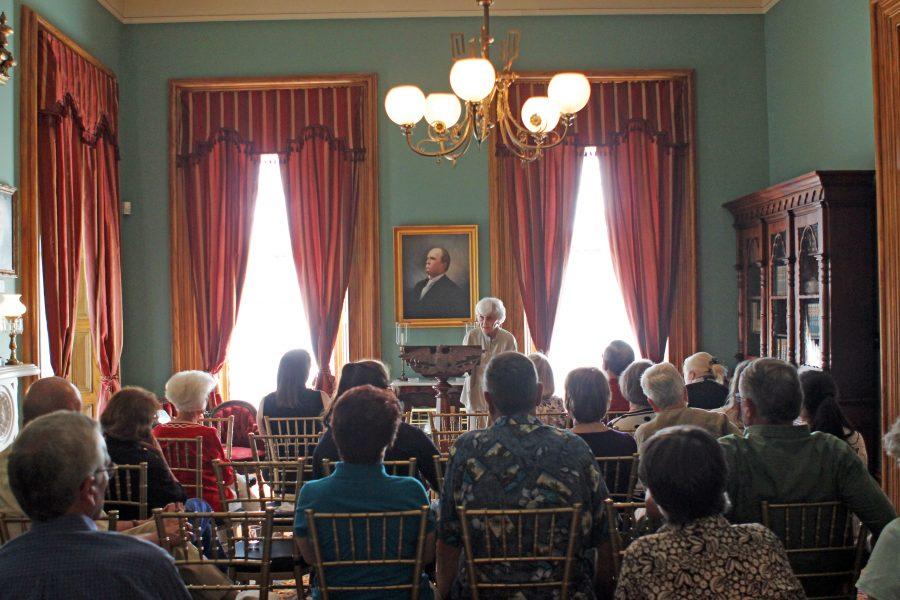Sarah Wiggins, a former history professor at The University of Alabama and Gorgas historian, presented a lecture on Gorgas on June 9 as part of the Tuscaloosa County Preservation Society’s Sundown Lecture Series. The lecture was held in a front room of the Jemison-Van de Graaff Mansion with roughly 25 people in attendance.
Lucy Murphy, event coordinator for TCPS, introduced Wiggins saying she was “back by popular demand.” She said nearly all the forms after Wiggins’ first Sundown Lecture said, “Bring her back.”
Wiggins began the lecture by sharing information on Gorgas’ personality.
“She was barely five feet tall, but she was an absolute dynamo,” Wiggins said. “Of anything that I’ve read about all the Gayle girls, she has personality, and I mean it was a dynamite kind of personality.”
After describing her appearance and personality, Wiggins told anecdotes about Gorgas’ life. Born in 1826 in Greensboro, Gorgas was the third child of John and Sarah Gayle. Her father would go on to become governor of the state for four years, moving his family to Tuscaloosa in 1831. In what would become apparent as true Gorgas fashion, Wiggins said 8-year-old Gorgas road her pet pony into the rotunda of the capitol building in downtown Tuscaloosa simply because “the door was open.”
She met her husband, Josiah Gorgas, in Mount Vernon, Alabama, after fleeing a yellow fever outbreak in Mobile. They were married in 1853. At the time, Josiah was known for constantly complaining to his superiors in the military about his work assignments, which Wiggins said angered the military. She said Amelia eventually “sanded off the rough edges” of Josiah’s personality, making him more patient.
After serving as the Chief of Ordnance in the Confederate Army, Josiah moved his family back to Alabama. He worked at an iron works and Sewanee for a time before accepting the presidency of The University of Alabama in 1878. After a stroke, he resigned as president and was given a house and the position of librarian, so he and his family moved into what is now known as the Gorgas House. From there, Amelia eventually took on roles such as nurse matron, librarian and the University’s first post-mistress.
Wiggins said former UA president George Denny tried to pay the utility bills for the Gorgas House as a thank you for Amelia’s service, but she didn’t want him to.
“[Denny thought] what she did for campus and how important she was for the students was worth far more than anything that he could ever repay, and certainly was worth the investment he was making in paying her utilities,” Wiggins said.
Gorgas retired in 1907 and passed away in the house in 1913. Throughout her life she didn’t like her appearance, and as a result there aren’t many photos of her.
“She made up for [her looks] in the kind of outgoing personality that people commented on throughout her life and for years after,” Wiggins said.
One audience member, Jennifer Cabanero, is a special collections cataloguer for the University Libraries department of special collections.
“I love collecting information about the University and anything I can find out about the Civil War era helps me in my work,” Cabanero said.









